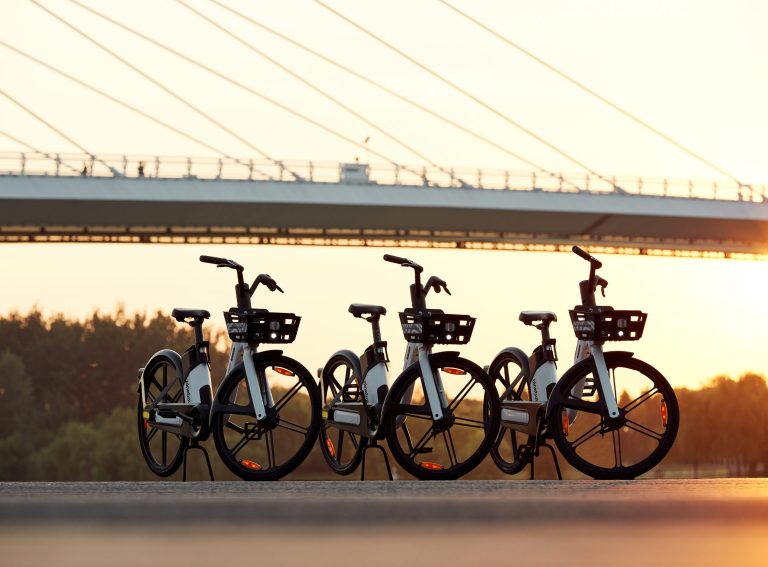Author: Adam Tarshis, Business Development Director, Anadue
The shared micromobility market has gone through a paradigm shift in the last year. Coming out of Covid lockdowns, the priorities of the market’s investors are now to generate profits, whereas previously growth was king. The result has been some uncomfortable headlines announcing headcount reductions and withdrawal from unprofitable markets.
Therefore, it is more important than ever for shared micromobility operators to see a return on every dollar invested and to maximise efficiency and productivity.
Harnessing the power of Artificial Intelligence (AI)
Using AI to spot pain points, identify solutions, and automatically implement action is key to the success of growing operators.
As these company’s add more vehicles, launch in more cities, gain a larger customer base, and recruit a bigger workforce, the more strategic analytics and automation become. To put it bluntly, a well-managed operator needs to know what’s happening everywhere, all the time, and that requires the mass collection of data. They also need to identify and implement the optimal action, millions of times a day, and the only way to optimise the decision-making process, at scale, is to automate this with advanced Machine Learning (ML) and AI capabilities.
The scope for automation is huge, far beyond the optimal distribution of vehicles (known as Rebalancing) that some operators look to optimise and automate. It extends into workforce planning and monitoring, customer care, churn prediction, dynamic pricing, fleet maintenance, and more. But what are the best ways to source analytics and automation?
Buy vs build
Many shared mobility operators struggle with the decision between whether to buy vs build their analytics solutions. Very few companies would develop their own ‘word processor’, so why do so many shared mobility operators attempt to develop their own ‘number processor’? And does the changing market mean this is the time for a strategic reassessment?
The benefits of building an in-house solution are that it will be unique to their organisation and can be tailored to their exact needs. The negative side of building a proprietary analytics and automation solution is the unknown cost and time required. Over time, operators can find that an increasing and unpredictable amount of resources are permanently tied up in maintaining and enhancing their solution. The entire business could be held back waiting for new features to be added to the solution. Eventually, they could end up with an expensive internal software house serving a single customer – themselves. This isn’t an optimal use of time or money, and instead of being a strategic advantage, it becomes a drag on the business.
On the other hand, buying analytics and profit automation solutions may make more sense. The operator can focus on optimising the use of tools, rather than developing them. The management team can drive the business forward, optimising fleet operations, directing their street teams, and improving their customer relationships, without the drag of waiting for software to be developed in-house. The costs of developing and maintaining an advanced analytics and automation platform are shared across all customers of the supplier. Improvements suggested by multiple customers of the platform are available for everyone. Features of the platform will be “world-class” as the vendor competes in a global market for analytics. The downside of buying in a solution is that all the costs are presented up-front, and they can be intimidating, whereas building in-house, the costs can mount over time, initially appearing unrealistically low, but ending up significantly higher. There can also be a perception that a bought-in solution will be a bad fit with an organisation’s needs, that it’s generic, and fails to give a strategic advantage.
The third way
Now imagine a new third option. An “off-the-shelf” shared mobility analytics and profit automation platform that’s delivered ready to use, with a comprehensive set of reports, APIs, and processes, but that is open to deep customisation. This offers the best of both worlds.
All essential capabilities are built-in, including the ingestion and parsing of data, the creation of thousands of low-level KPIs, an optimised database schema, and so on. All the “plumbing” of a smart, data-driven solution is delivered, integrated, and working, with a support organisation on hand. And as it is not a generic platform, but one designed from the ground up for shared mobility, it understands concepts such as “vehicles”, “trips”, and “riders” out of the box. It even comes with algorithms to calculate KPIs such as “time parked” that don’t fall easily out of the raw data feeds. It contains all the geospatial and other data about the cities being operated in.
Then add a “sandbox” capability, with a flexible report builder, a tool to create new APIs, the ability to add new data sets, and customise the database. This has all the advantages of building your own solution as you can build unique capabilities that give you a strategic advantage, but without the costs and delays of developing and maintaining a complex IT platform in-house.
Mike Manchip, CEO of Anadue, said: “Next-generation mobility platforms will be integrated with Machine Learning and Artificial intelligence platforms. Operational automation and dynamic pricing will reduce costs and increase revenues, reducing the friction between detecting revenue opportunities, and actually implementing them. Automation will free management teams to do what they do best – building a profitable business by providing the most convenient, reliable and cost-efficient means of green travel to their customers.”











